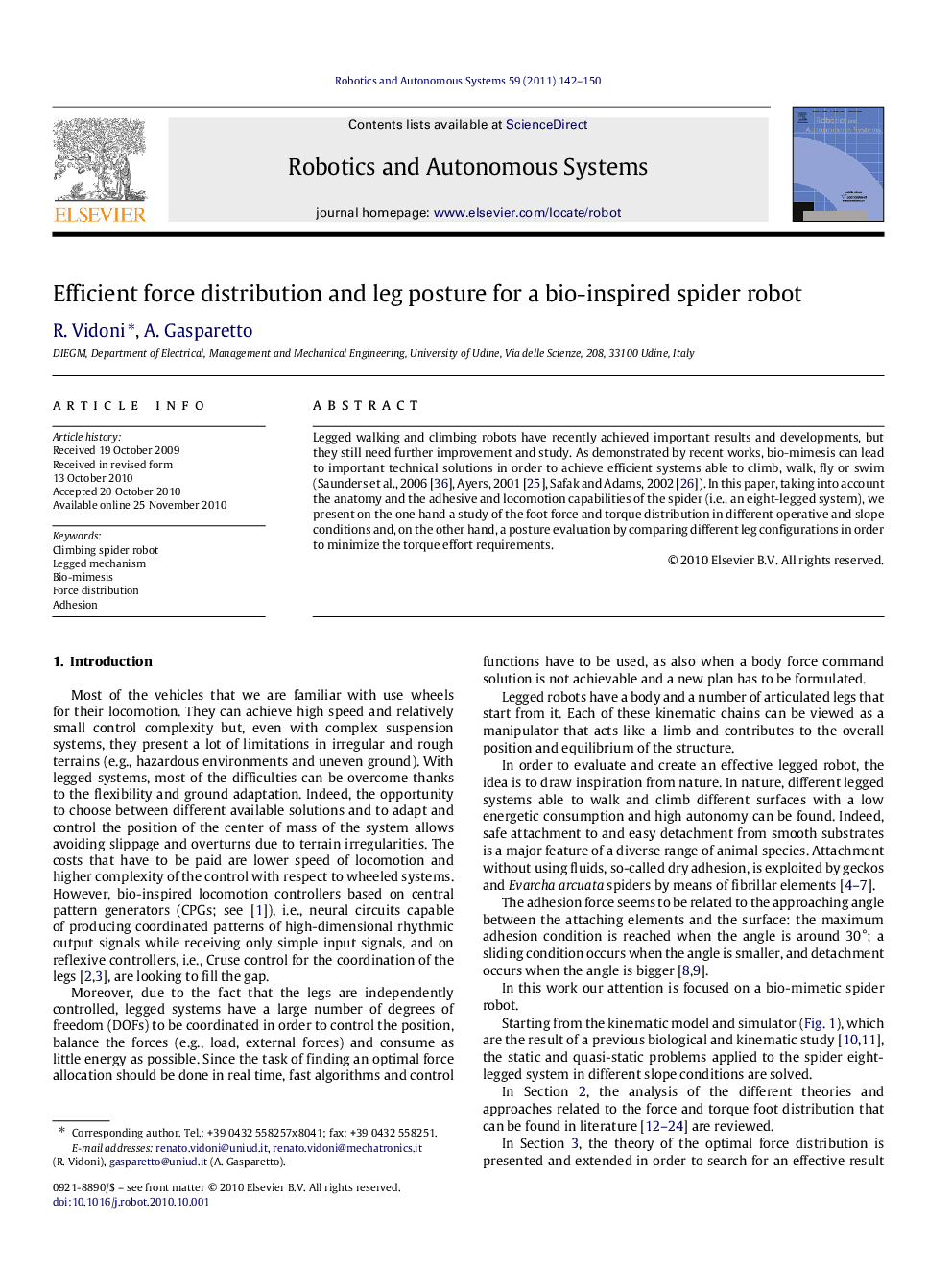| Article ID | Journal | Published Year | Pages | File Type |
|---|---|---|---|---|
| 413270 | Robotics and Autonomous Systems | 2011 | 9 Pages |
Legged walking and climbing robots have recently achieved important results and developments, but they still need further improvement and study. As demonstrated by recent works, bio-mimesis can lead to important technical solutions in order to achieve efficient systems able to climb, walk, fly or swim (Saunders et al., 2006 [36], Ayers, 2001 [25], Safak and Adams, 2002 [26]). In this paper, taking into account the anatomy and the adhesive and locomotion capabilities of the spider (i.e., an eight-legged system), we present on the one hand a study of the foot force and torque distribution in different operative and slope conditions and, on the other hand, a posture evaluation by comparing different leg configurations in order to minimize the torque effort requirements.
Research highlights► We addressed the force and torque distribution for an eight-legged spider robot. ► We considered the anatomy and the adhesive and locomotion capabilities of the spider. ► The static problem is solved in all the working conditions. ► We evaluated different bio-mimetic postures from a minimum effort point of view. ► The C-shape posture allows a low effort and a torque diminution along the leg joints.
